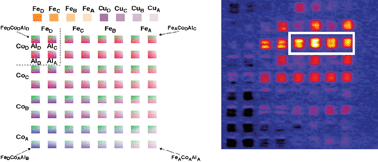Combinatorial approaches for the identification and optimization of oxide semiconductors for efficient solar photoelectrolysis†
Abstract
The cost effective generation of hydrogen with sunlight viawater photoelectrolysis is the critical breakthrough needed to transition the world to a renewable energy based hydrogen economy. A semiconductor based photoelectrolysis system may have cost advantages over using either a photovoltaic cell coupled to an electrolyzer or solar thermochemical cycles for

- This article is part of the themed collection: Renewable Energy

 Please wait while we load your content...
Please wait while we load your content...